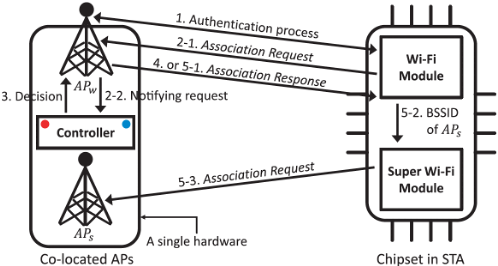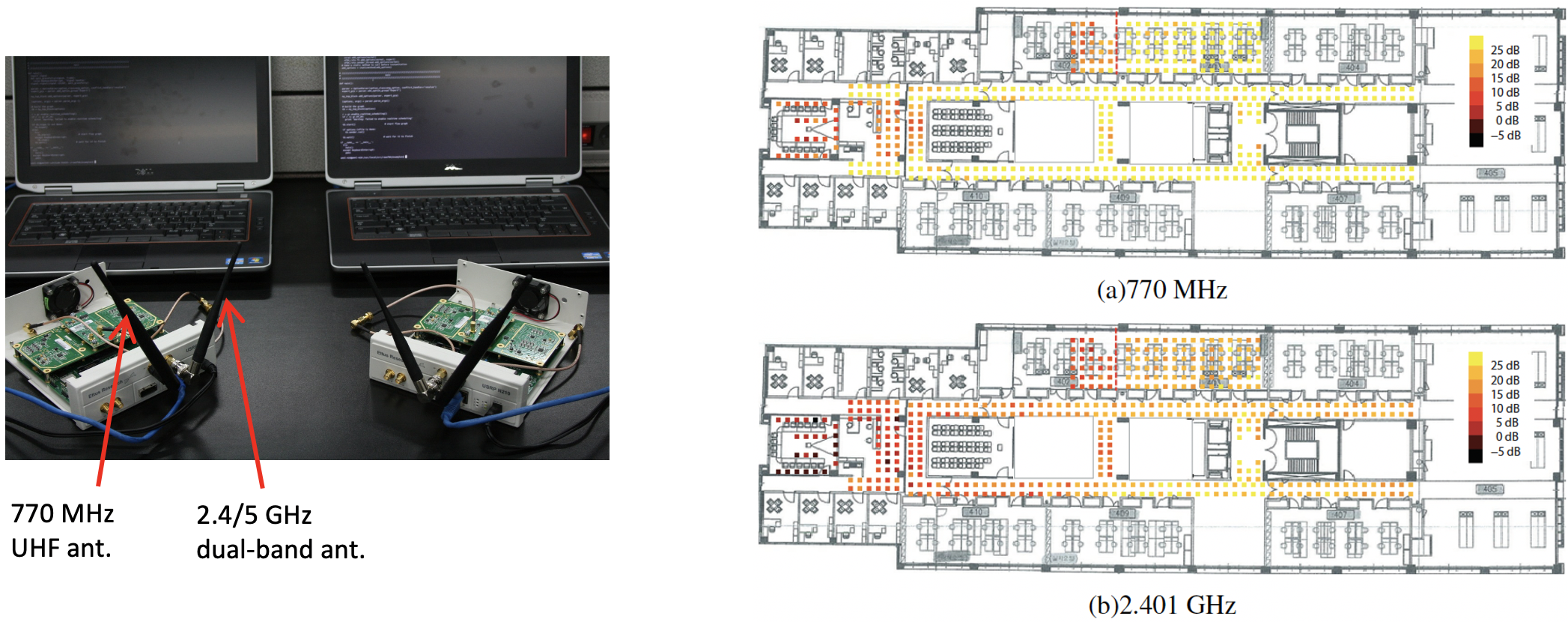DSA is a spectrum allocation policy that has been proposed to mitigate a shortage of allocatable wireless spectrum resources caused by legacy static spectrum allocation. The basic idea of DSA is to introduce opportunistic reuse of licensed spectrum by (unlicensed) secondary users (SUs), where they are allowed to access the licensed spectrum only when it is temporarily left unused by its (licensed) primary users (PUs). The duration of licensed bands without PUs’ signal activities is called white space or spectrum opportunity. The concept of white space is illustrated as follows.
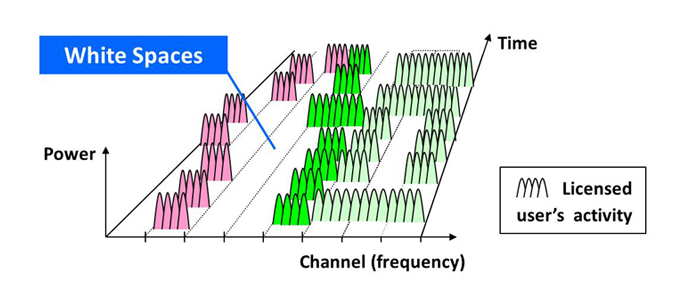
To efficiently discover and reuse the spectrum opportunities, SUs should be able to reconfigure themselves adaptively to the time-varying wireless environment, and thus they are referred to as cognitive radios (CRs). Simon Haykin (S. Haykin, IEEE JSAC, Vol. 23, No. 2, Feb. 2005) defined a CR as an intelligent wireless communication system that is aware of its environment, uses the methodology of understanding-by-building to learn from the environment, and adapts to statistical variations in the input stimuli. Such agile devices have been made realizable nowadays thanks to the recent advances in software-defined radio (SDR) technology. Note that there exist three widely used SDRs available in the market – USRP, Sora, and WARP (shown below). Note that the last image cut shows the internal structure of a USRP N210.


Super Wi-Fi (a.k.a. Wi-Fi 2.0) refers to Wi-Fi-like Internet access operating on whitespaces in the licensed spectrum using CR technology. Super Wi-Fi is expected to provide better performance and larger coverage than today’s Wi-Fi, thanks to the good propagation characteristics of the legacy spectrum such as TV bands. Super Wi-Fi can be modeled as a network consisting of an access point (called CR hotspot) and end-user terminals (CR devices) operated by a CR wireless service provider. The concept of Super Wi-Fi is currently being embodied as an international Wi-Fi standard, IEEE 802.11af.
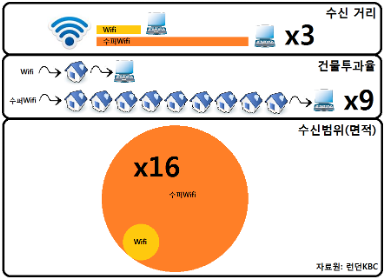
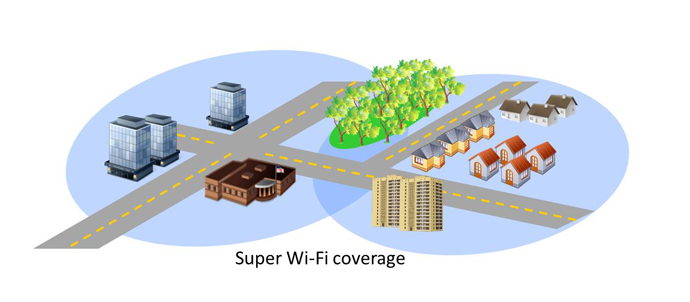
As our research effort on Super Wi-Fi, we have analyzed the network capacity of Super Wi-Fi coexisting with Wi-Fi, to identify in which cases Super Wi-Fi would be more beneficial. To obtain experimental proofs on such analytic results, the WMNL has built a heterogeneous wireless testbed consisting of Super Wi-Fi and legacy Wi-Fi networks, upon which an extensive indoor measurements was performed to reveal TVWS’s true potential, e.g., penetrating not only walls but also up to two floors!
As a practical application of aforementioned TVWS characteristics, we also proposed a hybrid AP combining Wi-Fi bands with TVWS to mitigate performance anomaly, by utilizing the former in the AP’s vicinity and the latter in the outskirt of the AP’s coverage.
